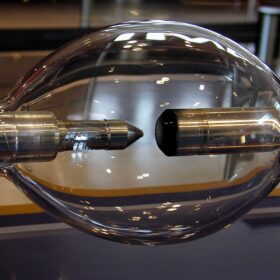Lightweight mobility with vehicle-integrated photovoltaics
A European consortium of commercial and research groups is developing lighter weight, solar-powered, cost-conscious, three and four-wheel prototype vehicles for passengers and cargo. The $13.4 million project aims for a platform that has standardized components, including the battery, powertrain, and solar PV parts, as well as support for end-of-life, maintenance, and refurbishment.
PV systems can now support grid as fossil fuels decline, says IEA-PVPS
A new report by the International Energy Agency’s Photovoltaics Power Systems Programme (IEA-PVPS) says that existing PV systems have the technical capabilities to provide various frequency-related grid services.
The Hydrogen Stream: Brazil signs hydrogen support scheme
As Brazil starts its low-carbon hydrogen program, industry consolidation continues with two M&A operations in Italy and Texas.
Sharp connects rooftop PV power with washer-dryer
The Japanese conglomerate said its washer-dryer can now be connected to rooftop PV via its AI-based Eee Connect system. This type of appliance adds to air conditioners, water heaters and refrigerators and can now be operated via the company’s Cocoro app.
The Hydrogen Stream: Canada, Italy announce funds for hydrogen trade, infrastructure
Canada and Italy announced funds for hydrogen projects. Meanwhile, a team of researchers explained that Australia should ship hydrogen to Japan by 2030 via methyl cyclohexane (MCH) or liquid ammonia (LNH3), not completely rejecting the option of liquid hydrogen (LH2).
New deterioration diagnosis tech for individual modules in PV panel strings
Conceived by scientists in Japan, the system consists of a a xenon flash lighting system and a detector capacitor. It can reportedly examine solar modules and find the degraded ones without disconnecting the string’s electrical wiring.
Thin-film perovksite solar cell based on fluorinated phosphoric acid achieves 20.5% efficiency
Japanese scientists built a thin-film perovskite solar cell incorporating fluorinated phosphoric acid (TPFP) into the absorber’s precursor solution. The device achieved remarkable power conversion efficiency due to effective passivation at the interface between the perovskite film and the hole transport layer.
Japan’s 20th solar auction concludes with average final price of $0.029/kWh
Japan has allocated 93 MW of PV capacity in its latest procurement exercise. The lowest bid for a 1.9 MW solar project came in at JPY 4.5 ($0.029)/kWh, while the average final price was JPY 6.8/kWh.
EneCoat to accelerate perovskite PV production
EneCoat Technologies, a Japanese solar perovskite developer, has raised JPY 5.5 billion ($35 million) from new and existing investors to finance new collaborations based on its low-temperature production process.
New design for antimony trisulfide solar cells promises 30% higher efficiency
An international research team has proposed a series of optimization techniques for antimony trisulfide (Sb2S3) solar cells that may reportedly increase the efficiency of these PV devices to over 11%. The resulting new cell design is said to significantly improve band alignment control and parameter optimization.










